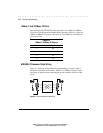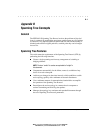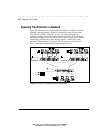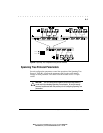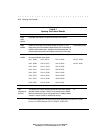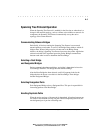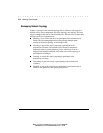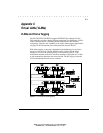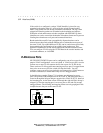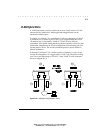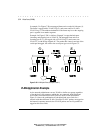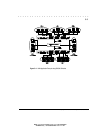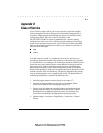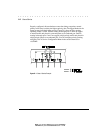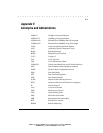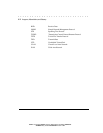
. . . . . . . . . . . . . . . . . . . . . . . . . . . . . .
C-2 Virtual Lans (VLANs)
Writer: Fran Spragens Project: Virtual Lans (VLANs) Comments:
File Name:3324_c.doc Last Saved On:3/16/99 11:47 AM
If the switch is so configured, a unique VLAN identifier is placed in a tag
appended to the packet when it is received by the switch from end-station
nodes, if the packet does not already contain this information. The tag is then
stripped off when the packets are forwarded to the destination end stations.
Within the switch and between switches compliant with IEEE 802.1Q, these
identifiers are used to control the destination of broadcast frames and to prevent
flooding these broadcasts to all ports and connected interfaces.
Broadcast/multicast traffic from geographically dispersed stations can be
directed across these links without radiating out to stations that are not part of
the same VLAN. Up to 4094 different VLANs can be carried across these links,
thus permitting the configuration of up to 4094 virtual workgroups. This
approach is nonintrusive to end-station applications and the associated clients.
You can configure VLANs using the VLAN Menu in the console interface and
associated submenus, or via SNMP.
VLAN Access Ports
SW3322/SW3323/SW3324 ports can be configured as one of two types for the
purpose VLAN configuration: access or hybrid. A VLAN access port is used to
connect one or more VLAN-unaware devices into a port of a VLAN device.
There can be no VLAN tagged frames entering an access port. If a tagged frame
does arrive on an access port, the switch will drop the frame. You can
configure a port as an access port (typically one connected to a VLAN-unaware
end-user workstation) to ensure that it only receives untagged frames.
In the following example (Figure C-2), both ports are designated as access
ports. The ports are both configured to be on VLAN X. The untagged frame (1)
comes in through the left port and gets tagged with a VLAN X tag (2), based on
the incoming port. As the frame comes out through the right side port, the tag is
stripped (3) since the outgoing port is an access port as well and only accepts
untagged frames. The incoming and outgoing frames can only propagate in this
example because they are on the same VLAN.
Figure C-2 VLAN Access Ports



